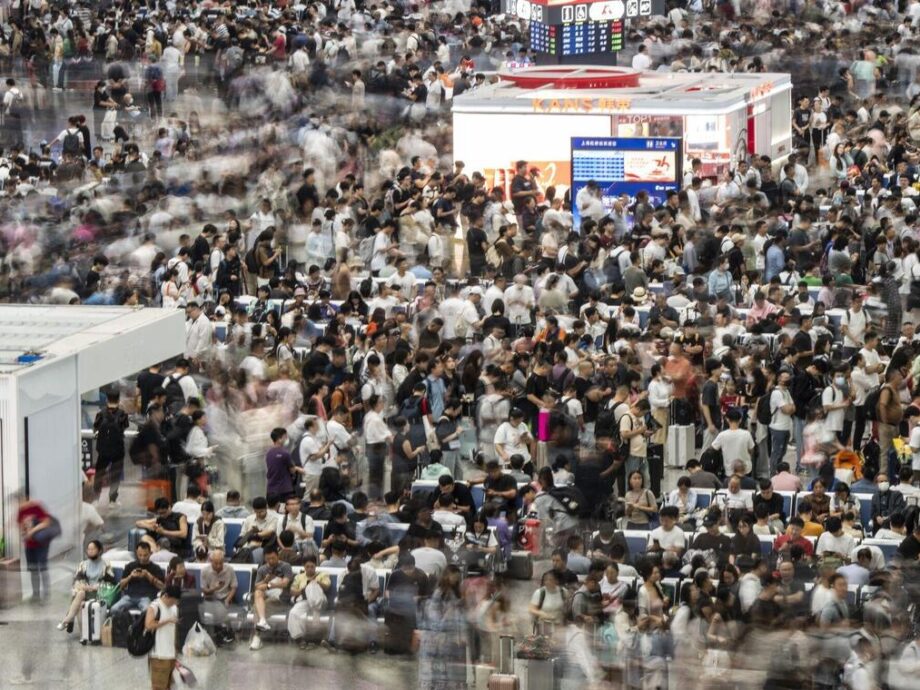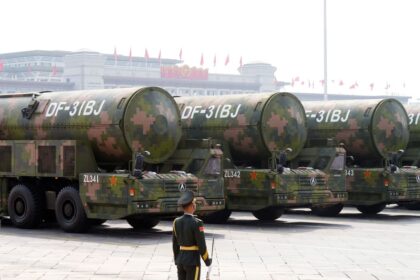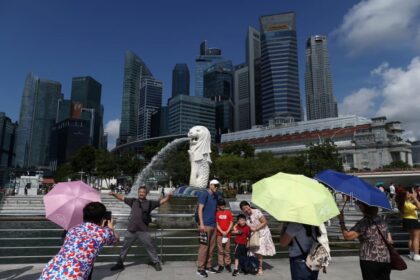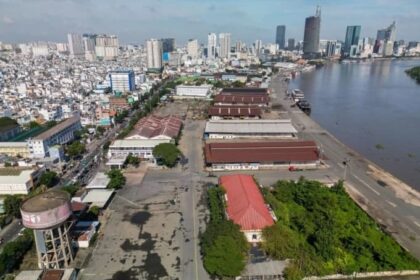Holiday rush stretches safety systems across China
At Beijing Happy Valley, workers begin the day with checks on rides and empty car tests, a routine that intensifies when the Golden Week holiday arrives. The scene captures the twin realities facing China from October 1 to 8. Hundreds of millions of trips fuel a nationwide celebration and an essential spending boost, while the sheer volume of travelers pushes the limits of safety systems at both famous and lesser known attractions.
- Holiday rush stretches safety systems across China
- How big is the Golden Week travel wave?
- Crowds and the hard lessons from recent accidents
- What officials are doing to keep people safe
- The economy behind the crowds
- Outbound travel reshapes the map
- How travelers are changing their playbook inside China
- Ideas gaining traction for safer holiday travel
- What to Know
The scale is immense. On October 1 alone, transport authorities recorded 335.8 million passenger trips across trains, highways, waterways, and flights. Popular spots from the Great Wall to Hangzhou West Lake brace for hours long queues, while scenic mountains such as Mount Hua deploy extra patrols and AI powered cameras for real time crowd counts. Domestic tourism has rebounded after the pandemic years, yet the holiday crush exposes old fault lines. Aging structures, inconsistent enforcement, and gaps in emergency preparedness turn routine crowd management into a stress test.
Conditions are uneven across the country. Large national parks and top rated attractions often run strict inspections, set clearer visitor caps, and deploy more trained staff. Rural destinations and emerging sites tend to have lighter oversight. The shift in traveler preferences toward nature, outdoor activities, and smaller towns has been good for local economies, yet it also moves more visitors to places where professional safety management is still catching up.
Golden Week’s structure concentrates the risk. China has a handful of long public holidays and a long summer break. Paid annual leave is a legal right, but workers often align trips with school schedules or choose to keep leave days in reserve. This produces peak crowds in a narrow window, a pattern that amplifies congestion even as infrastructure improves.
How big is the Golden Week travel wave?
Authorities expect 2.36 billion cross regional trips over the eight day holiday in 2025, which works out to roughly 295 million journeys per day. That would be an increase of about 3.2 percent from last year. Cross regional figures, which count movements across transport networks, differ from tourism tallies that track domestic visitor trips. Both sets of data point to a record crush.
Tourism spending is rising, but not evenly. Official data for the current Golden Week reported 888 million domestic tourism trips and 809.01 billion yuan in revenue, gains from a year earlier. Even so, average spending per trip remains below levels seen before the pandemic, and many hotels and guesthouses cut prices to keep rooms filled. The pattern mirrors the May Day period earlier in the year, when domestic trips reached 314 million and spending totaled about 180.3 billion yuan, yet consumer budgets were still tight in many cities.
Behind these figures sits a price race that has reshaped travel decisions. Many operators report last minute bookings and frequent price adjustments. Some properties slashed nightly rates, while bed prices in several large cities fell from a year earlier. Travelers benefit from lower prices and more choice, aided by high speed rail and abundant flights that make short notice trips more feasible.
Crowds and the hard lessons from recent accidents
In the lead up to the holiday, a series of tragedies underscored why crowd safety is not theoretical. A flash flood at a wild camping site in Inner Mongolia killed a group of campers. In Xinjiang, a suspension bridge cable failure killed visitors. An incident involving a cable car at Yandang Mountain showed that even established attractions can face dangerous failures. Each case points to a common set of pressures, from aging or poorly maintained structures to emergency plans that do not keep pace with extreme weather or peak day congestion.
Why risk grows during peak days
Peak holidays compress time and space. When an attraction receives several times its normal daily traffic, bottlenecks build at trailheads, gondolas, shuttle stops, and narrow stairways. Overcrowding puts stress on ropes, walkways, and towers. It also slows evacuation and emergency response. Inspectors who conducted targeted checks this year across multiple provinces flagged nearly 400 hazards ahead of the holiday. Those ranged from rafting operations with weak safety protocols to hot air balloon rides without adequate equipment. Some inspectors also found minors performing in dangerous shows. The findings reflect gaps in enforcement capacity and uneven safety culture in parts of the sector.
What nature can do to a crowded site
Extreme weather is a growing factor in holiday planning. Sudden downpours, flash floods, landslides, and wind gusts turn exposed pathways or riverbanks into high risk zones. A crowded festival or mountain trail complicates any evacuation and pushes rescue teams to the limit. Many scenic areas now combine weather alerts with visitor caps and dynamic closures, yet the effectiveness of these measures depends on staffing, coordination with local police and fire services, and whether older structures can handle stress loads during a surge.
What officials are doing to keep people safe
Central authorities told local governments to tighten safety checks before the holiday, with a focus on bridges, cable cars, sightseeing boats, and high risk rides. Sites were instructed to track crowd density more closely, to stage more visible patrols, and to step up fire prevention. Provinces such as Yunnan carried out extra inspections of tourist vehicles and boats. On transport networks, planners coordinated with city clusters to smooth return traffic, with police urging regions affected by heavy rain to take pre emptive action and reduce risks.
Weather disruptions provide a window into how safety policy plays out on the ground. During a Golden Week marked by a strong typhoon signal, Macau still counted hundreds of thousands of arrivals in the first days. The city paused ferries, shuttle buses, and some flights during the storm but kept casinos open while preparing rest areas. In a statement, the gaming regulator explained the rationale for keeping venues operating under tight precautions.
The regulator said:
To ensure the safety of casino workers and patrons, and to prevent potential risks arising from casino closures, gaming venues will remain open during the typhoon, and casinos have already prepared rest areas for casino workers and patrons.
The approach underscores a broader principle seen across China during peak holidays. Keep critical venues staffed and monitored, suspend transport that cannot be operated safely, and provide shelters and clear information for travelers who are stranded or delayed.
The economy behind the crowds
Golden Week is a pillar of local commerce. Restaurants, guesthouses, car rental firms, street markets, and theme parks plan for months to capture demand. This year, sellers reported brisk activity but thinner margins. Price competition has been intense, with some operators cutting listed rates by large amounts to maintain occupancy. Lower prices helped fill trains, highways, and hotels, yet the revenue picture remains uneven, especially for small businesses with rising labor and utility costs.
Spending patterns have also shifted. Travelers chase value by booking rooms at the last minute, staying just outside city centers, or choosing small cities with lower prices. Bookings in less developed areas rose sharply from a year earlier, a trend that reflects both budget pressure and curiosity for new places. High speed rail has been key. It connects second and third tier cities into the national tourism map and makes quick getaways possible without advance bookings.
Many cities use the holiday to spur sales across sectors, not only at scenic sites. Large auto shows ran in Tianjin and other hubs, blending culture and consumption to draw families and car buyers. Exhibitions highlighted new energy models and in car tech, and some venues issued vouchers or hosted live streams to nudge purchases. Holiday road trips and self driving tours supported this push, as households combined leisure travel with showroom visits and test drives.
Outbound travel reshapes the map
Golden Week is also a marker for China’s return to international travel. Surveys of Chinese travelers show strong interest in overseas trips, with many planning journeys that are flexible and experience focused. Europe and nearby Southeast Asia are at the top of many lists, while a growing share of travelers venture to less typical destinations for culture and nature.
Competition for Chinese visitors is intense. Some destinations in Southeast Asia reported fewer inbound tourists from China for this Golden Week, while others gained. Vietnam drew more Chinese visitors in recent months, helped by lower cost and a steady perception of safety. Thailand forecast a drop in Chinese arrivals for the holiday, as price sensitive travelers shifted to other places. At the same time, group travel to long haul markets such as France and Spain rose, supported by an increase in international flight capacity. The result is a more varied outbound footprint than in the past.
How travelers are changing their playbook inside China
The travel boom is shaped by new preferences at home. More people pick independent, flexible trips that blend outdoor time with food, culture, and quiet exploration. Social media drives discovery of small towns, river valleys, and mountain trails that used to sit off the main path. Value for money is the theme. Families trade five star hotels for comfortable guesthouses, or swap a top theme park for a scenic drive followed by a local festival.
Timing is part of the strategy. Students and remote workers often visit before the holiday to avoid crowds, while other travelers aim for the days right after the official break when prices dip and trains are less crowded. Those with fixed schedules still anchor trips to the core holiday, yet the broader spread of travel days helps disperse demand. Attractions and cities that adjust staffing and ticketing to this pattern tend to manage peaks with fewer strains.
Ideas gaining traction for safer holiday travel
Officials and operators are experimenting with tools that fit the Golden Week pattern. Real time crowd dashboards and standardized density thresholds allow parks to slow entries before walkways become chokepoints. Pre booking for popular attractions, even when entry remains free, helps stagger arrivals. Text alerts and map updates keep visitors informed about closures and weather risks, especially in mountain and river areas.
Engineering fixes matter. Systematic inspections of bridges, gondolas, lifts, and cliff trails can identify weak points ahead of peak days. Emergency drills that bring together park staff, local police, and medical teams shave minutes off response times when something goes wrong. Insurance requirements and clear liability rules encourage operators to invest in maintenance and training.
Policy steps can reinforce these gains. Standards for high risk activities such as rafting or hot air balloon rides are being tightened, and violators face penalties or closures. Cities that adopt dynamic caps on visitor numbers, with clear communication to the public, tend to see fewer dangerous crowd surges. In rural destinations that have grown fast thanks to social media fame, targeted investments in footbridges, restrooms, first aid posts, and evacuation routes can pay off within a single season.
What to Know
- Golden Week runs October 1 to 8 and produces hundreds of millions of daily trips across China’s transport networks.
- Authorities project 2.36 billion cross regional journeys for the 2025 holiday, about 295 million per day.
- Official tourism data show 888 million domestic trips and 809.01 billion yuan in revenue during this Golden Week, though average per trip spending remains lower than before the pandemic.
- Top sites use AI powered crowd monitoring, stricter inspections, and more staff, while many smaller or rural destinations still face oversight gaps.
- Recent accidents, including a flash flood and a bridge cable failure, spotlight risks from aging structures and emergency plans that lag peak day needs.
- Pre holiday inspections across several provinces found nearly 400 safety hazards, including issues with rafting, hot air balloons, and unsafe performances.
- Transport and police agencies coordinated return traffic flows across major city clusters and urged pre emptive measures in regions facing extreme weather.
- Holiday travel is fueled by intense price competition, last minute bookings, and the reach of high speed rail, which helps disperse demand to smaller cities.
- Outbound travel is rebounding, with Europe and Southeast Asia in demand; Vietnam gained share while Thailand expected fewer Chinese visitors for this holiday.
- Measures gaining ground include pre booking at popular sites, dynamic visitor caps, stronger inspections of lifts and bridges, and better weather alert systems.












